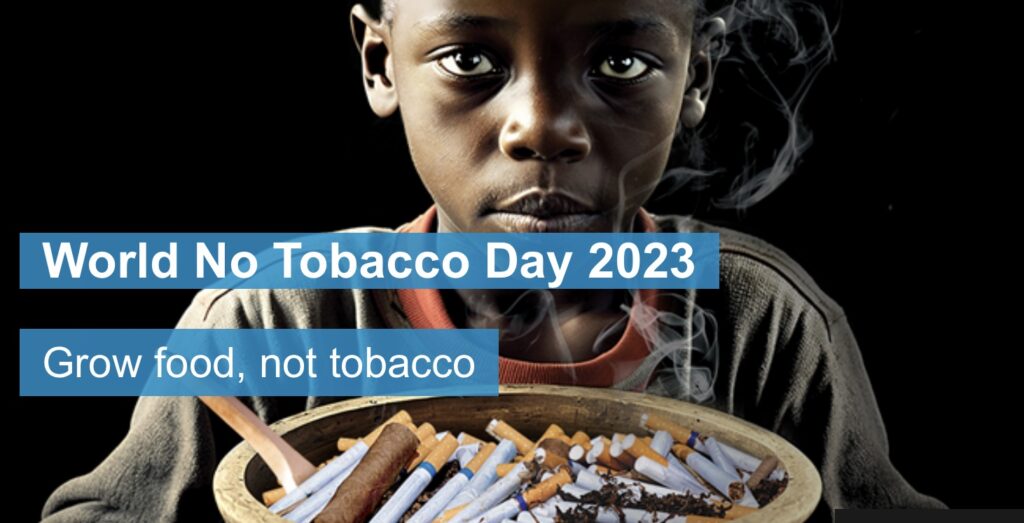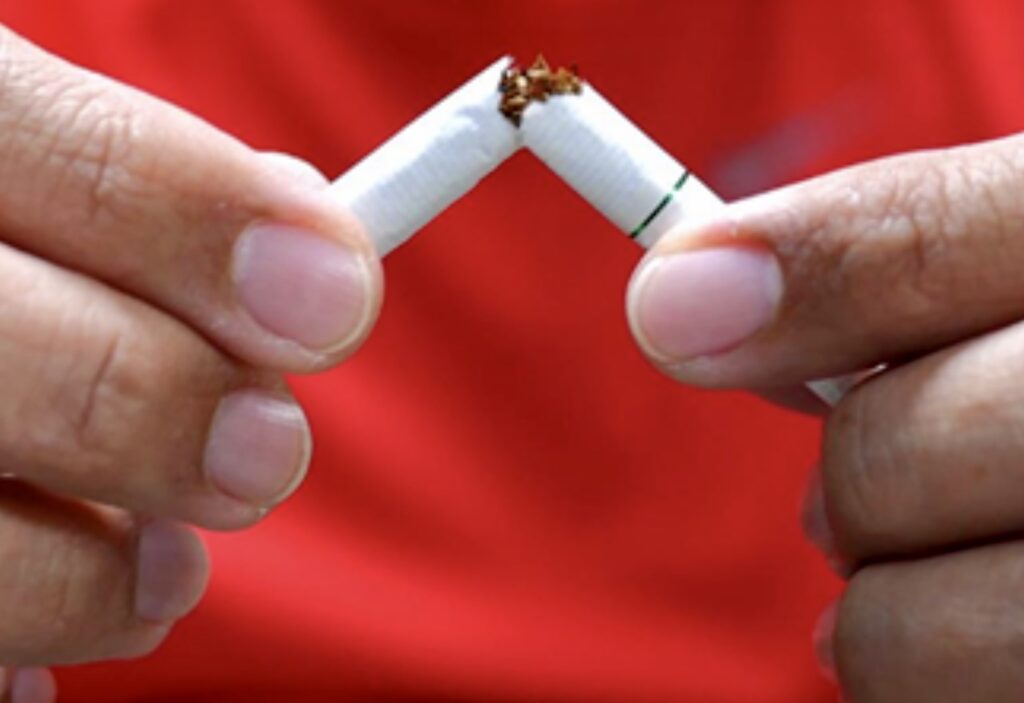By Henrylito D. Tacio
Stop subsidizing tobacco farming and support more sustainable crops that could feed millions, the World Health Organization urges governments and the international community. The plea was issued during the recent World No Tobacco Day celebration.
“Tobacco is responsible for 8 million deaths a year, yet governments across the world spend millions supporting tobacco farms,” said Dr. Tedros Adhanom Ghebreyesus, WHO Director-General. “By choosing to grow food instead of tobacco, we prioritize health, preserve ecosystems, and strengthen food security for all.”
More than 300 million people globally are faced with acute food insecurity. On the other hand, more than 3 million hectares of land across more than 120 countries are being used to grow deadly tobacco, even in countries where people are starving.
In the Western Pacific region, the Philippines ranks second to China in terms of hectares planted to tobacco. About 28,380 hectares are planted to tobacco in the Philippines compared to China’s 1,014,553 hectares.
New report
A new WHO report, “Grow food, not tobacco,” highlights the ills of tobacco growing and the benefits of switching to more sustainable food crops for farmers, communities, economies, the environment, and the world at large.
The report also exposes the tobacco industry for trapping farmers in a vicious cycle of debt, propagating tobacco growing by exaggerating its economic benefits and lobbying through farming front groups.
“Tobacco growing harms our health, the health of farmers and the planet’s health,” the report said. “The tobacco industry interferes with attempts to substitute tobacco growing, contributing to the global food crisis.”
According to the UN health agency, tobacco farming causes diseases to the farmers themselves and more than 1 million child laborers are estimated to be working on tobacco farms, missing their opportunity for an education.
“Tobacco is not only a massive threat to food insecurity, but health overall, including the health of tobacco farmers. Farmers are exposed to chemical pesticides, tobacco smoke and as much nicotine as found in 50 cigarettes – leading to illnesses like chronic lung conditions and nicotine poisoning,” said Dr Ruediger Krech, Director of Health Promotion at WHO.
Damages environment
Tobacco growing also damages the environment. “Tobacco farming accounts for about 5% of total deforestation, further contributing to carbon dioxide emissions and climate change,” the WHO said. “To make space for tobacco crops, trees must be cut down and land cleared.”
Growing tobacco likewise contributes to habitat fragmentation, meaning that parts of the habitat are destroyed leaving smaller unconnected areas, which can undermine ecosystems and contribute to loss of biodiversity.
The WHO also identified some concerns on how tobacco growing threatens food security and nutrition. For one, it creates scarcity of quality land. Since quality lands are used for growing tobacco, it reduces the amount of land that could be utilized for crops to nourish people.
It also degrades soil. “The tobacco plant and the chemicals required to grow it degrade the soil and intercropping – the practice of growing two or more crops in close proximity – is a challenge as the soil is depleted of essential nutrients for productive farming,” the WHO said.
Food security
There’s also a limited choice of alternatives. “Choices of alternative crops are sometimes limited due to absence of strong assured markets as compared to the tobacco market, as well as of government support to transition away from tobacco growing,” said the UN health agency.
As tobacco is a labor-intensive crop which takes up to 9 months to mature, small farmers will have a hard time to grow food crops within the same year, the WHO said.
Most farmers who are growing tobacco are trapped in a cycle of debt. “The tobacco industry keeps farmers dependent by providing them with incentives, such as loans or supplies needed to grow tobacco like seeds and agrochemicals,” the WHO explained.
“Often under contractual arrangements with the tobacco industry, farmers are trapped in a vicious circle of debt, unable to get a fair price for their product,” the WHO added. “Tobacco companies are able to do this because there is a lack of rural credit available.”
Grim statistics
Let’s take a closer look at some statistics issued by the UN health agency:
* Tobacco kills up to half of its users.
* Tobacco kills more than 8 million people each year. More than 7 million deaths are the result of direct tobacco use while around 1.2 million are the result of non-smokers being exposed to second-hand smoke.
* Over 80% of the world’s 1.3 billion tobacco users live in low- and middle-income countries.
* In 2020, 22.3% of the global population used tobacco, 36.7% of all men and 7.8% of the world’s women.
“The tobacco epidemic is one of the biggest public health threats the world has ever faced,” the WHO pointed out.
Quitting smoking
When tobacco users become aware of the dangers of tobacco, most want to quit. “However, nicotine contained on tobacco products is highly addictive and without cessation support, only 4% of users who attempt to quit tobacco use will succeed,” the WHO said.
There are immediate and long-term health benefits for those who want to quit smoking. Beneficial health changes that take place: within 20 minutes, your heart rate and blood pressure drop and within 12 hours, the carbon monoxide level in your blood drops to normal.
Here are more health benefits: 2-12 weeks, your circulation improves and your lung function increases; 1-9 months, coughing and shortness of breath decrease; 1 year, your risk of coronary heart disease is about half that of a smoker’s; 5 years, your stroke risk is reduce to that of a non-smoker 5 to 15 years after quitting; and 10 years, your risk of lung cancer falls to about half that of a smoker and your risk of cancer of the mouth, throat, esophagus, bladder, cervix and pancreas decreases.
According to the WHO, the following are benefits in comparison with those who continued: at about 30, gain almost 10 years of life expectancy; at about 40, gain 9 years of life expectancy; at about 50, gain 6 years of life expectancy; at about 60, gain 3 years of life expectancy.
Every year, on May 31, the international community observes World No Tobacco Day. The annual celebration informs the public on the dangers of using tobacco, the business practices of tobacco companies, what the World Health Organization (WHO) is doing to fight against the use of tobacco, and what people around the world can do to claim their right to health and healthy living and to protect future generations. – ###


Photos courtesy of Rhoy Cobilla and WHO.
Sources:
https://www.who.int/campaigns/world-no-tobacco-day/2023/top-50-tobacco-growing-countries
https://www.who.int/campaigns/world-no-tobacco-day/2023/top-50-tobacco-growing-countries
https://www.who.int/publications/i/item/9789240073937








